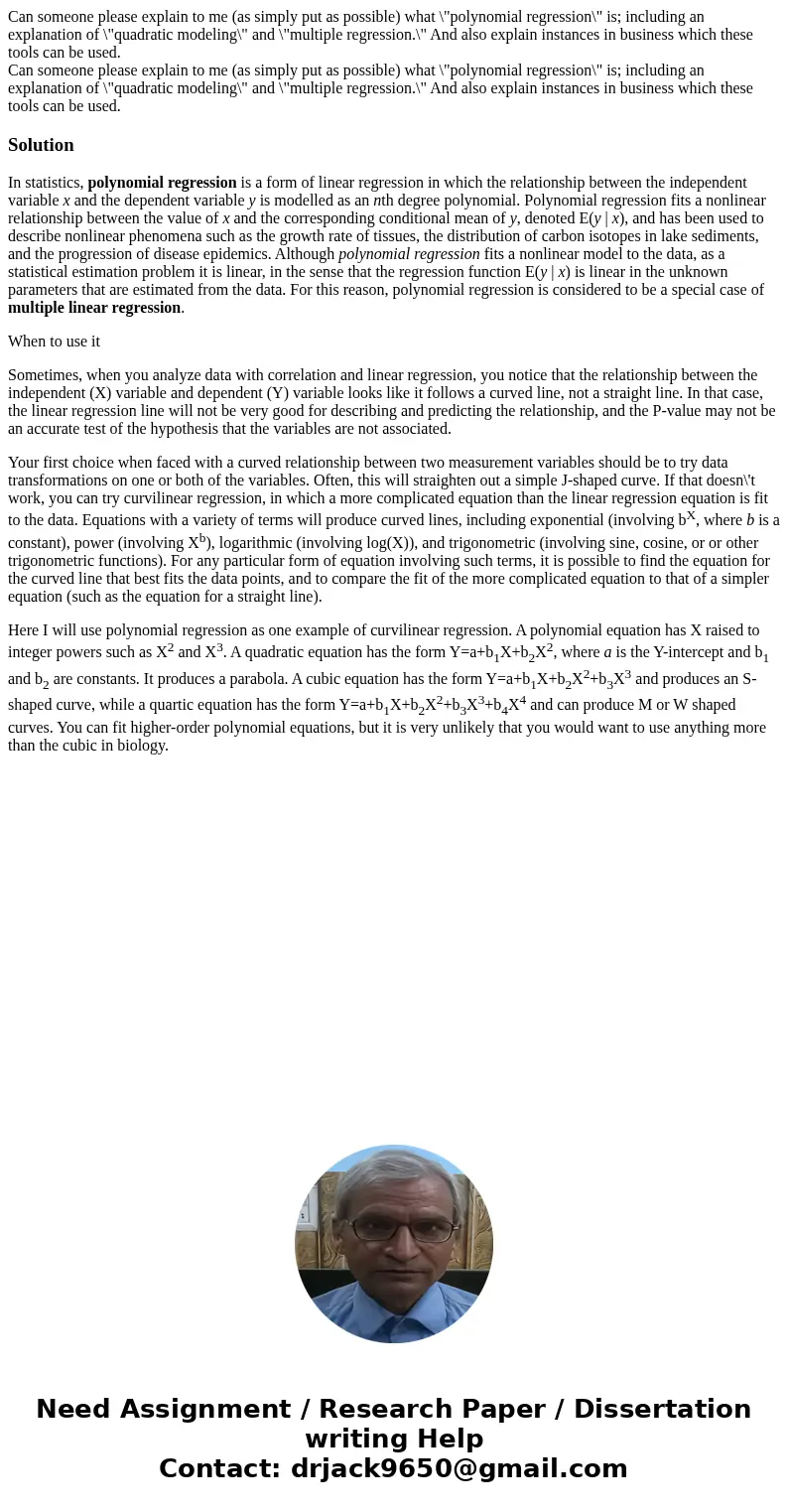Can someone please explain to me as simply put as possible w
Solution
In statistics, polynomial regression is a form of linear regression in which the relationship between the independent variable x and the dependent variable y is modelled as an nth degree polynomial. Polynomial regression fits a nonlinear relationship between the value of x and the corresponding conditional mean of y, denoted E(y | x), and has been used to describe nonlinear phenomena such as the growth rate of tissues, the distribution of carbon isotopes in lake sediments, and the progression of disease epidemics. Although polynomial regression fits a nonlinear model to the data, as a statistical estimation problem it is linear, in the sense that the regression function E(y | x) is linear in the unknown parameters that are estimated from the data. For this reason, polynomial regression is considered to be a special case of multiple linear regression.
When to use it
Sometimes, when you analyze data with correlation and linear regression, you notice that the relationship between the independent (X) variable and dependent (Y) variable looks like it follows a curved line, not a straight line. In that case, the linear regression line will not be very good for describing and predicting the relationship, and the P-value may not be an accurate test of the hypothesis that the variables are not associated.
Your first choice when faced with a curved relationship between two measurement variables should be to try data transformations on one or both of the variables. Often, this will straighten out a simple J-shaped curve. If that doesn\'t work, you can try curvilinear regression, in which a more complicated equation than the linear regression equation is fit to the data. Equations with a variety of terms will produce curved lines, including exponential (involving bX, where b is a constant), power (involving Xb), logarithmic (involving log(X)), and trigonometric (involving sine, cosine, or or other trigonometric functions). For any particular form of equation involving such terms, it is possible to find the equation for the curved line that best fits the data points, and to compare the fit of the more complicated equation to that of a simpler equation (such as the equation for a straight line).
Here I will use polynomial regression as one example of curvilinear regression. A polynomial equation has X raised to integer powers such as X2 and X3. A quadratic equation has the form Y=a+b1X+b2X2, where a is the Y-intercept and b1 and b2 are constants. It produces a parabola. A cubic equation has the form Y=a+b1X+b2X2+b3X3 and produces an S-shaped curve, while a quartic equation has the form Y=a+b1X+b2X2+b3X3+b4X4 and can produce M or W shaped curves. You can fit higher-order polynomial equations, but it is very unlikely that you would want to use anything more than the cubic in biology.

 Homework Sourse
Homework Sourse